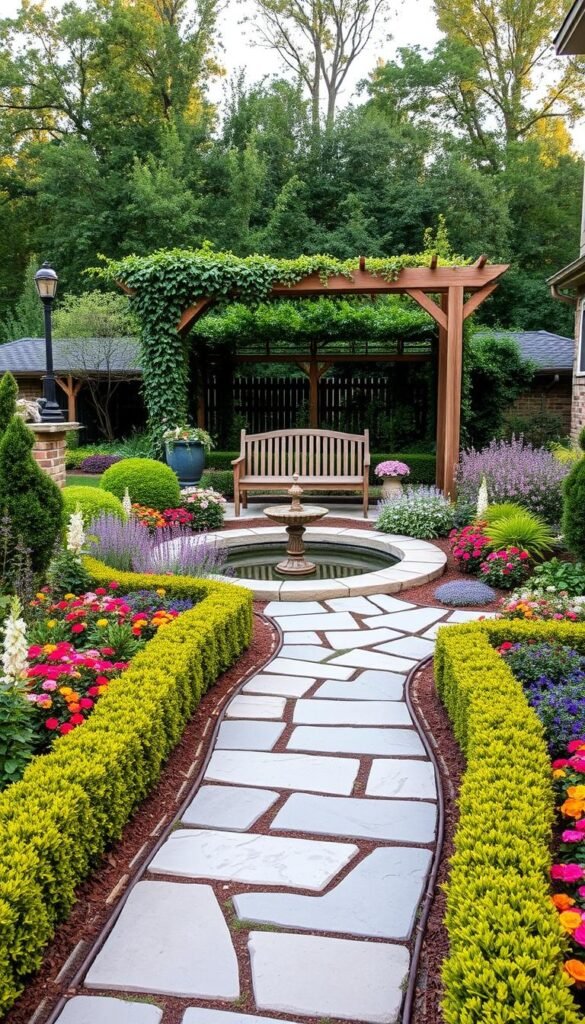Planning your outdoor space starts with a vision. Imagine stepping into a garden that matches your daily rhythm—whether you crave fresh veggies for summer salads or a colorful retreat for relaxation. A thoughtful design turns chaotic planting into a structured, rewarding experience.
Creating a visual garden layout helps you avoid overcrowding plants or forgetting key details like sunlight patterns. You’ll know exactly where to place tomato cages, herb boxes, or flower beds before breaking ground. This approach saves time, money, and frustration during growing season.
Think about how your family uses the yard. Do you need space for kids to play? Prefer low-maintenance perennials? Your plan should reflect these priorities. Smart spacing and plant selection ensure your harvest aligns with meals you love while fitting your schedule.
With a clear roadmap, you’ll confidently choose plants that thrive in your climate and soil. No more guessing games—just a productive, beautiful space tailored to your home and habits. Let’s turn that blank canvas into your dream garden.
Understanding Your Backyard Space
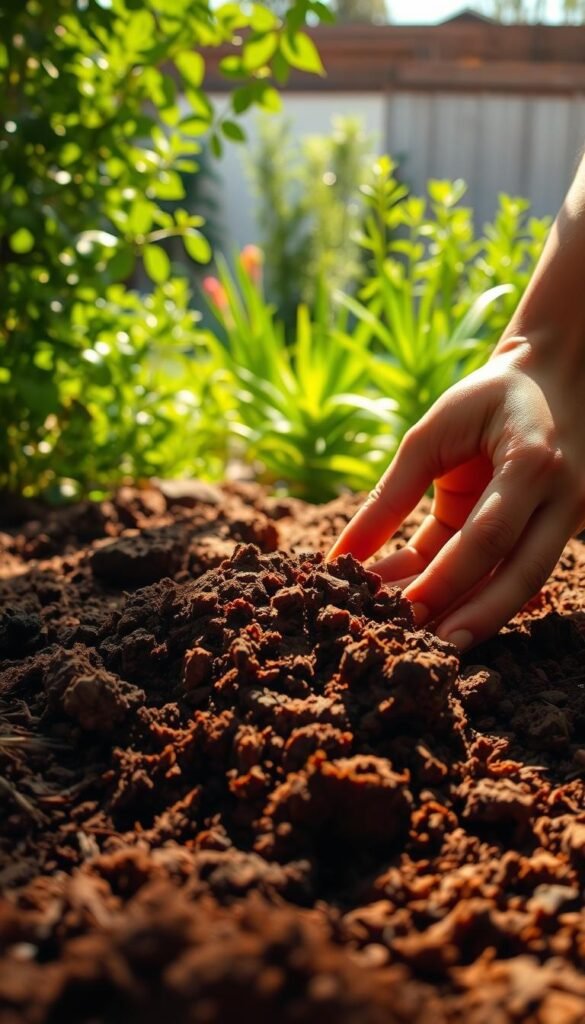
Your backyard holds secrets to a thriving garden—unlock them by studying its unique traits. Observe how light dances across the garden space and where shadows linger. Track seasonal changes to spot frost-prone zones or sunny hotspots perfect for heat-loving crops.
Assessing Sunlight and Soil Conditions
Most veggies demand 6-8 hours of daily sun. Tomatoes and peppers? They’ll soak up even more. Grab a notebook and sketch sun patterns weekly—you’ll spot trends fast. Dig into your soil texture with this simple test:
| Soil Type | Drainage | Nutrient Level | Best For |
|---|---|---|---|
| Clay | Slow | High | Brassicas |
| Sand | Fast | Low | Root crops |
| Loam | Balanced | Rich | Most plants |
Pair this knowledge with a square-foot gardening plan for efficient use of limited areas. Amend heavy clay with compost or grow radishes in sandy patches.
Identifying Existing Features and Structures
Map trees, slopes, and sheds that cast shadows or block wind. Note where water pools after storms—those spots might drown delicate roots. Mark utility lines to avoid costly mistakes when digging beds.
Watch your space through all seasons. That sunny spring corner? It might vanish under maple shade by July. Record microclimates near walls that trap heat for early seedlings.
Creating a To-Scale Garden Map
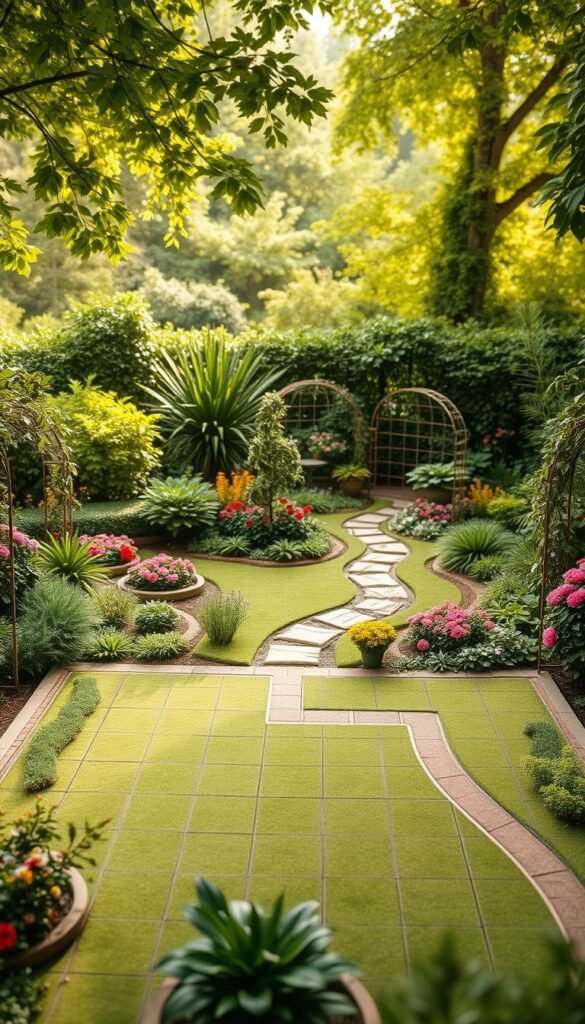
Precision transforms guesswork into growth. A scaled drawing acts as your green-thumb GPS, guiding plant placement and preventing overcrowding. Start with clean paper and fresh enthusiasm—this blueprint becomes your growing season playbook.
Measuring Your Space Accurately
Grab a 100-foot measuring tape—the extra length handles large yards smoothly. Record every boundary, tree base, and permanent structure. Note diagonal measurements between corners; odd angles often hide wasted space.
Jot numbers on grid paper using a clipboard. This system stops wind from stealing your notes. Local landscaping supplies typically use feet, making imperial units practical for simple garden plan material calculations later.
Sketching Your Garden Plan
Convert raw numbers using scaling magic. Try 1/4 inch = 1 foot for most American gardens—it fits standard paper sizes. Pencil lets you erase when rosemary outgrows its assigned spot.
Use a straight-edge ruler for crisp bed lines. Lightly shade areas needing soil amendments. This visual design helps spot traffic flow issues before you plant that first seedling.
How to Map Out a Backyard Garden Layout That Fits Your Lifestyle
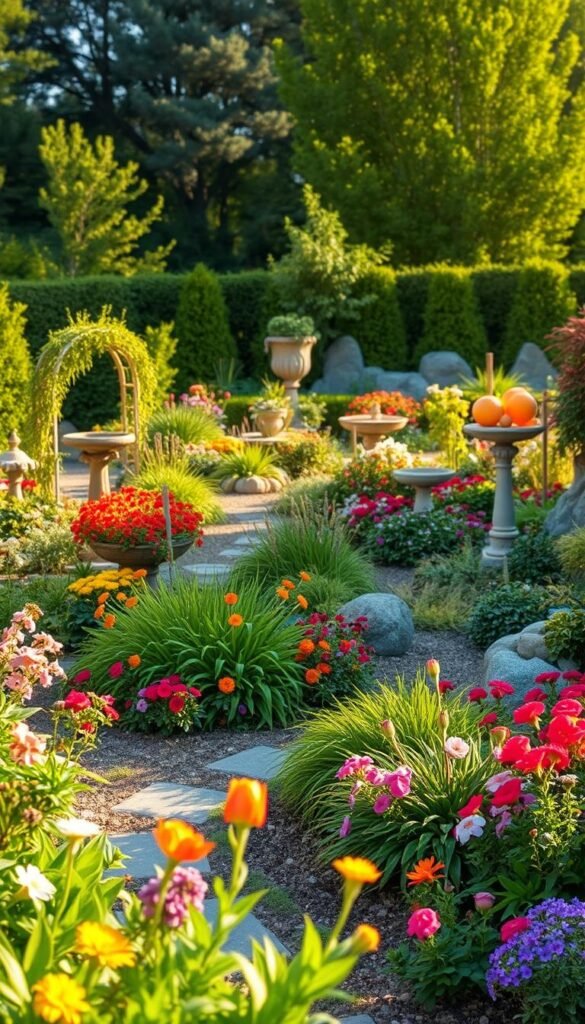
Your garden blueprint begins with dreams, not dirt. Start by collecting inspiration like fallen leaves—save photos of curved pathways or vibrant flower borders that catch your eye. This garden layout foundation blends practicality with personal flair.
Ask yourself three core questions: What meals do you want to harvest? Which colors soothe or energize you? How much time can you realistically devote weekly? A fire pit for evening gatherings might outweigh growing 20 tomato plants if relaxation tops your priority list.
Consider these elements for your wish list:
- Edible vs ornamental balance
- Path materials (gravel vs stepping stones)
- Vertical structures like arbors
- Specialty zones for herbs or cut flowers
That sunny corner could host a butterfly-attracting wildflower patch near kids’ play equipment. A compact gardening space might prioritize salad greens in vertical planters beside a cozy bistro set. Remember—your layout should make you smile every time you step outside.
Balance aspirations with reality. Love the cottagecore look but hate weeding? Opt for dense plantings that suppress weeds naturally. Dream of fresh berries but lack time? Blueberry bushes need less care than annual strawberries. Your perfect garden exists where passion meets practicality.
Setting Your Garden Goals and Vision
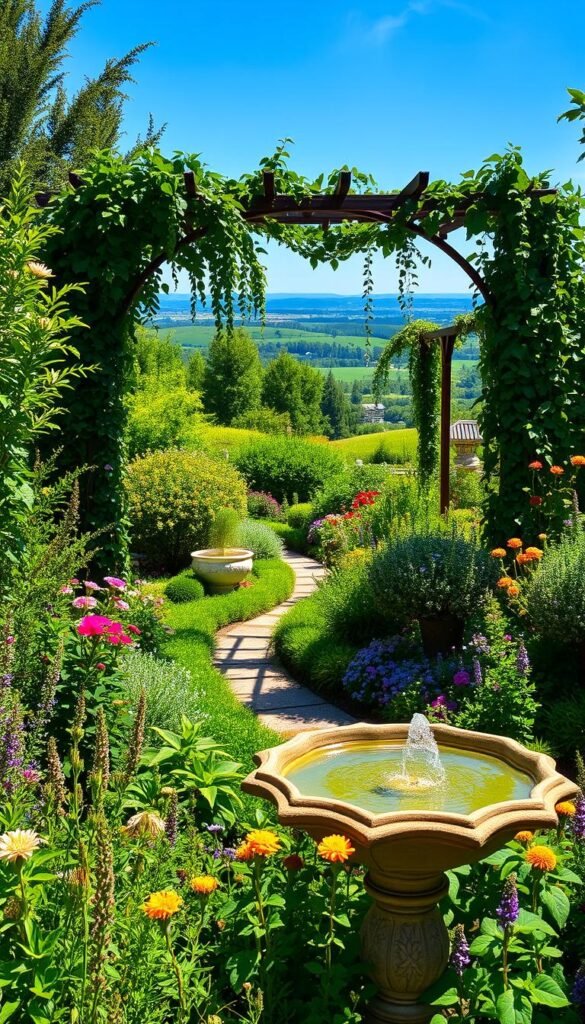
Your perfect outdoor oasis begins with intentional choices. Start by exploring farmer’s markets and nursery websites—these treasure troves reveal what plants thrive locally while sparking fresh ideas. Chat with neighbors tending lush tomatoes or vibrant flowers; their success stories become your cheat sheet.
Developing Your Garden Wish List
Build your plant lineup like a personalized menu. Focus on vegetables you’ll actually use—why waste space on turnips if salads rule your table? Mix practical picks with fun experiments:
- Snap peas for vertical drama
- Kale for shade tolerance
- Perennial asparagus beds
- Rainbow chard for visual pop
Regional adaptability matters. Check seed packets for heat zones and frost dates—a zucchini that flourishes in Texas might sulk in Oregon. Local garden centers often stock climate-appropriate crops, taking the guesswork out of selection.
Balance ambition with reality. New to growing? Start with foolproof cherry tomatoes and bush beans. Limited time? Try low-maintenance garlic or perennial herbs. Your garden should energize, not exhaust you—every plant earns its spot through beauty, flavor, or both.
Selecting the Right Layout and Design Elements
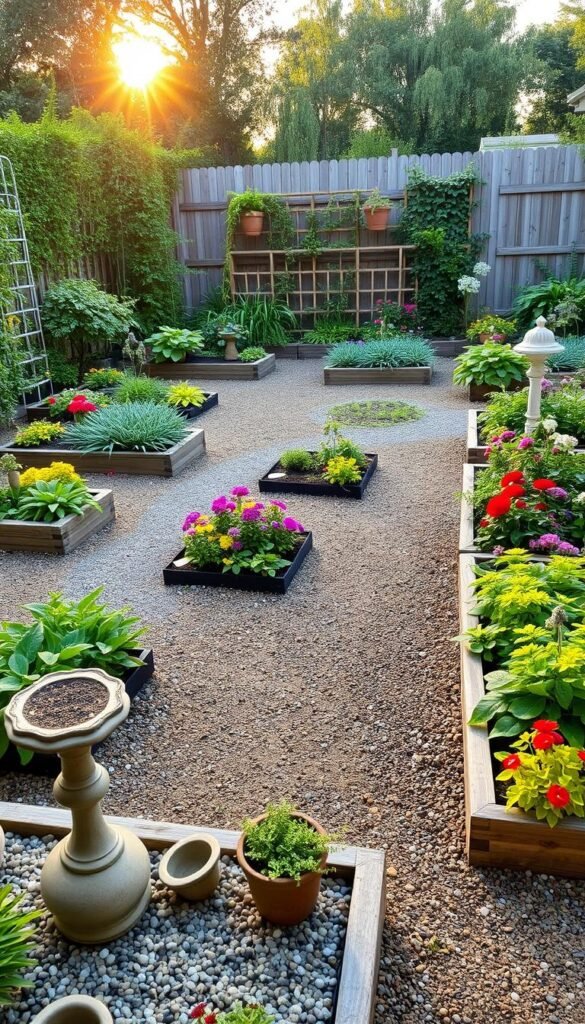
Your garden’s personality shines through its design. Whether you crave orderly rows of lettuce or wildflower chaos, the right layout turns dirt into magic. Let’s explore styles that match both your soil and soul.
Choosing Between Beds and Open Areas
Raised beds conquer poor soil and offer precise control. They’re perfect for urban spaces or gardeners wanting defined areas. Traditional in-ground plots work well for sprawling crops like corn if your earth already drains properly.
Square-foot gardening maximizes tight spaces with grid-based planting. Vertical systems let cucumbers climb fences instead of spreading sideways. Sloped yards? Terraced garden beds create flat planting zones while preventing erosion.
Integrating Aesthetics with Functionality
Mix edible and ornamental elements for beauty that feeds you. A potager garden arranges kale beside marigolds—pests hate the combo. Curved pathways through vegetable beds add visual flow while making harvests easier.
Choose materials that echo your home’s style. Rustic cedar planks suit cottage gardens, while sleek metal raised beds complement modern landscapes. Trellises double as art when draped with scarlet runner beans or morning glories.
Incorporating Raised Beds, Containers, and Trellises
Maximize every inch by blending vertical and horizontal elements. Trellises transform empty air into productive space, letting vining plants climb instead of sprawl. Imagine juicy tomatoes dangling above basil-filled containers—a feast for the eyes and plate.
Smart Solutions for Every Scenario
Metal or wooden trellises give structure to cucumbers and pole beans while adding winter interest. Pair them with raised beds for easy-access roots crops like carrots. For renters or poor soil, portable containers offer flexibility—stack them on shelves or hang them near sunny windows.
Proper spacing prevents disease. A well-placed trellis ensures airflow around squash leaves, reducing mildew risks. Mix functional supports with colorful container arrangements for instant curb appeal. Even small patios can host lettuce towers beside blooming nasturtiums.
Choose materials that suit your style. Cedar raised beds blend into cottage themes, while geometric trellises elevate modern spaces. Your garden becomes a living sculpture, tailored to thrive in your unique conditions.

